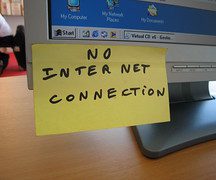In recent years, broadband roll-out in the MENA region increased steeply. Mobile penetration and home internet subscriptions are definitely on the rise. However, digital inclusion remains scarce and discrepancies are high within the region. This is particularly true for less educated persons and the elderly, as well as women who are 9% less likely than men to own a mobile phone and 21% less likely to use mobile internet. In the EU, while 75% of all citizens are regular internet users and internet penetration has reached 85%, there are still gaps. One in three people with disabilities continue to be left behind regarding internet access and usage. COVID-19 has starkly highlighted this digital divide.
Those digitally disadvantaged have been further excluded from many services and employment arrangements (such as remote working) amid the COVID-19 lockdown. For many in blue collar or lesser-skilled professions, remote work is not an option, which in turn further contributes to exposing them to the virus. Similarly, many people relying on public services and benefits have not been able to access them due to a lack of required skills or lack of access to technology. The UN Special Rapporteur on extreme poverty and human rights has recently investigated the implications of the emergence of a ‘digital welfare state’ in many (primarily Western) countries, which pushes many households living below the poverty line further to the margins of society.
Women are particularly vulnerable to the digital divide and there are multiple barriers to their internet access. The United Nations stressed that discrimination on the basis of social and cultural norms is one of the most pronounced causes of the gender digital divide. Further barriers include affordability issues, the impossibility to make financial decisions within the household or the lack of digital literacy and confidence – leading to an inability to use basic digital tools and accessing information online. Without access, women are less equipped to participate in society. As such, the gender digital divide is both a symptom and a cause of women’s human rights violations.
With the COVID-19 measures rendering physical gatherings almost impossible, organising collectively, taking part in citizens’ discourses or initiatives, and demanding one’s rights are made more difficult. The internet has become the only means for people to exercise their right to civic and political participation. The digital divide however complicates participation as some citizens are de facto excluded from it. As a result, inequalities are further deepened.
Location-tracking apps brought by governments to monitor the spread of COVID-19 pose multiple issues as well. Some worry about the risks to their personal data and privacy. Conversely, the lack of access to technology by large portions of the population render them unable to use these apps and benefit from them.
The answer can come from technology itself. The fight against gender inequality can be greatly advanced if women and girls are involved both as consumers and technology creators. Closing the skills gap by training women in leadership and developing women’s business skills can facilitate the establishment of start-up businesses and open new opportunities in the digital economy.
However, this can only be achieved if those disadvantaged are involved in the design of technology-driven policy responses in a meaningful way. Digital inclusion requires that people, notably disadvantaged groups, obtain both the skills and access that enable them to use information and communication technologies in order to reap the benefits of technological progress. Otherwise, tech-driven responses to the COVID-19 crisis may just reinforce systemic inequalities.
Main feature by Marion Sandner, Economic and Social Rights Programme Officer and Roberto Frifrini, Shrinking Space Programme Officer.

